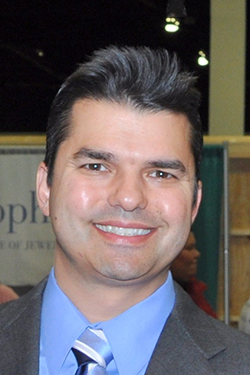
The public health emergency caused by the COVID-19 pandemic has forced many businesses to temporarily close their doors. But a new door has also been opened, offering a convenient way for patients to get medical help.
A Convenient Process
Using telemedicine, patients can be diagnosed and receive a treatment plan at home or at work, while traveling, or from a college dorm room. This alleviates the need to drive to a medical office and spend time in a waiting room, which is especially important during these days of social distancing. And because it’s such a visual practice, dermatology is particularly well-suited for telemedicine.
Soderstrom Skin Institute has taken full advantage of recently relaxed procedural and insurance restrictions that now make telemedicine a desirable choice for patients and medical professionals alike. “About 500 patients a week are doing office visits via telemedicine and we are talking about creating a telemedicine department,” according to Dr. Carl Soderstrom.
Stuart Berryman, certified physician assistant, is an enthusiastic proponent of dermatology telemedicine. “There’s more we can do than we can’t do using telemedicine,” he explains. “We can take a look at a rash or bump, for example, and make a diagnosis.” Berryman has been seeing between four and 25 patients a day using telemedicine, and many of those patients are elderly. They’ve grasped the technology, he notes, and love the convenience of telemedicine because they don’t have to drive to the office, or find a ride if they no longer drive.
Here’s how the telemedicine process works at Soderstrom Skin Institute. The first step is to call (888) 970-7546 or fill out a form online at soderstromskininstitute.com. An office staff member will call to obtain medical and insurance information, and the patient will receive a link about 10 minutes before the appointment. Patients must have a smartphone, computer or tablet with a camera and microphone to do a face-to-face digital chat with a dermatologist or certified physician assistant. If it’s determined that an in-person office visit is needed, an appointment will be made. Private pay and insurance are both accepted for a telemedicine appointment.
Expanding the Practice
Soderstrom Skin Institute has been “dabbling” with telemedicine for six or seven years, and we planned to take this year to go full-bore. When this timeline was shortened considerably by the pandemic, about 50 staff members quickly went to work creating the process. Berryman sees a great future for telemedicine in the dermatology field if the eased restrictions are allowed to continue after the pandemic. “Telemedicine will become more and more popular,” he states. “Some patients are nervous about the accuracy or technology at first, but once they see how it’s done, they’re on board with it.”
While telemedicine has drastically reduced the number of patients coming into the office, our doctors, physician assistants and nurses have continued to see patients in person for emergencies and surgeries. Dr. Soderstrom believes they are heroes and heroines. “They are taking all the safety precautions, but still putting themselves at risk to help our patients. They should be saluted.” PM
For more information, visit soderstromskininstitute.com/telemedicine.
- Log in to post comments

